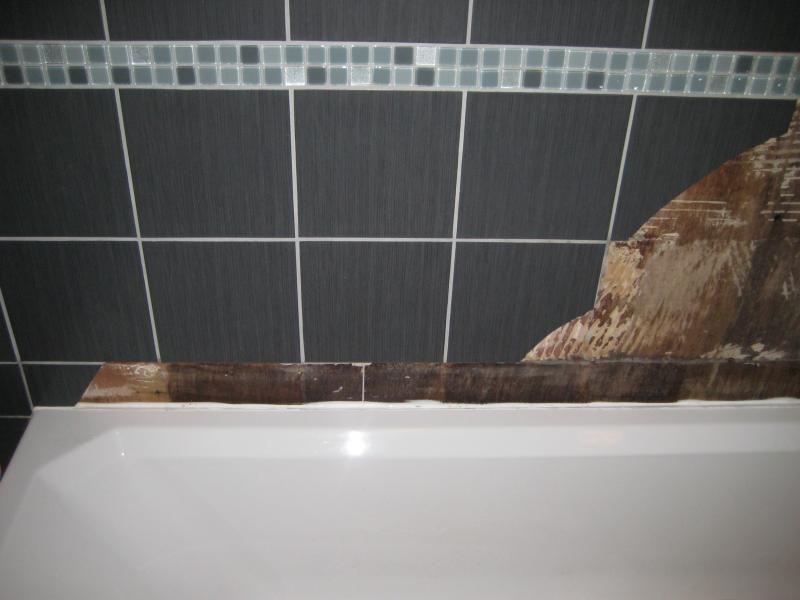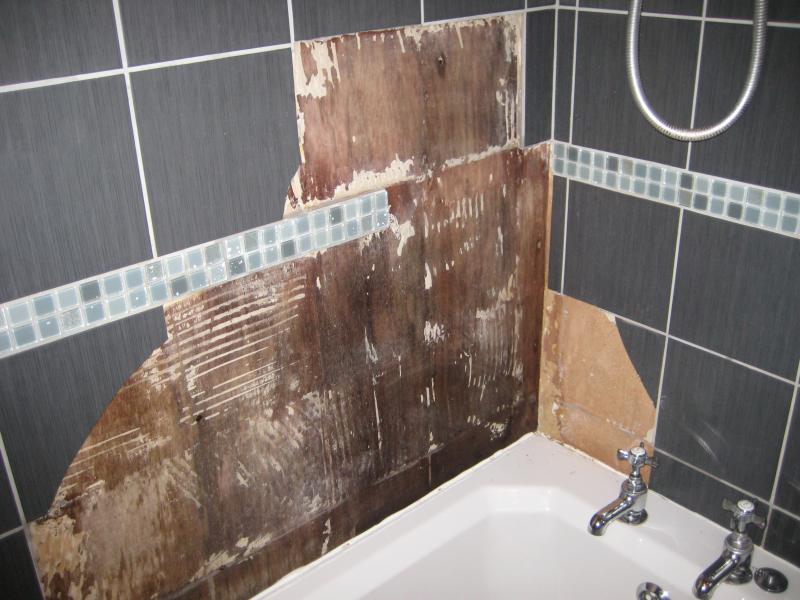- Joined
- 8 Dec 2007
- Messages
- 36
- Reaction score
- 1
- Country

Yesterday I noticed there was a slight leak under by bath/shower. I assumed this was down to a sealant leak, so started removing all silicon sealant from around the bath. I soon noticed some tiles were loose and the grout was cracked. I began removing the loose tiles, the adhesive didn’t stick to the wall at all. It totally came off with the tile and there was mould on the wall.
When the wall was 1st tiled, the stud wall was covered with 18mm WBP ply and tiled straight away. Should I have given it some kind of sealing coat? Also, the wall with the shower was tiled onto plaster (bonding). I took a single tile off this wall and again, the adhesive didn’t stick to the wall at all.
See attached pic. Any advise would be welcome
When the wall was 1st tiled, the stud wall was covered with 18mm WBP ply and tiled straight away. Should I have given it some kind of sealing coat? Also, the wall with the shower was tiled onto plaster (bonding). I took a single tile off this wall and again, the adhesive didn’t stick to the wall at all.
See attached pic. Any advise would be welcome


